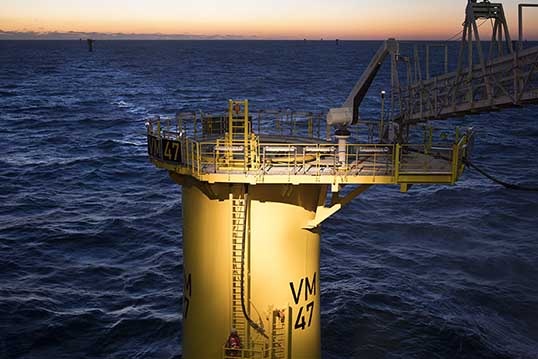 Photo Credit: Vattenfall
Photo Credit: Vattenfall
Investors are warming to early stage projects, what are their drivers?
At K2 Management we frequently get requests from investors looking for “good projects” and we often end up performing technical due diligence on their investment objects.
This is a positive and proactive approach. But it often translates into investors focusing on projects that are either ready for financial close, or which have already reached financial close. Here, competition is fierce and prices are high.
Many experienced developers and utilities carry out beauty contests when opening up projects for investors. This drives up prices and reduces the return on investment for the buyer significantly, often to low single digits.
Based on our experience as a technical adviser, as many as two out of three investors could end up bidding too low, so time and money spent in preparing are often lost.
Instead, it might make more sense to spend the money and resources more wisely as many developers often are stuck with projects at earlier stages.
Cash flow could be low, the developer could be setting up the wrong contracting strategy with suppliers, or be unable to find an off-taker for the power-purchase agreement — or simply doesn’t know how to progress. Investing at this stage may be more of a risk, but returns would probably be higher.
We are already witnessing more experienced investors doing this, taking construction or in some cases even development risks. This can create double-digit returns and a much wider selection of investment objects. All market reports expect significant growth in wind energy in the coming decades, so pick your favourite spot on the world map for future engagement.
We are not asking investors to become developers, but simply to rethink their investment strategy. In the development or construction phases, engagement could also be a mezzanine loan, where you as an investor have an influence on the project setup, selection of turbines, contract strategies, and so on.
However, your risks are still limited. When the project progresses, loans could be converted to equity. Sure, some projects will not make it and some of your money could be lost. But you are also losing money preparing bids you are not winning for more developed projects.
We often see that the unsuccessful investor in the early stages only relies on the developer and his road map for the project. But why buy a black box?
Investors that try to manage the risks directly by having their own people with development experience involved — either in-house or through support from consultants and advisers — more often win out.

We are, for instance, working for a large pension fund that is looking into this kind of approach, as it does not want to buy just a stake in an existing wind farm where returns are low and transparency is poor. Instead, the fund has been very selective about geography, developers and partners it wants to team up with.
In other words, they are rethinking the concept and moving due diligence upstream.
This involvement gives investors more transparency and security. It also has a positive impact on the progress of the projects. Some concepts and business case scenarios can be redeveloped and the bank will often give the developer better credit lines as it has more financial and technical support.
Working with developers and investors, we often create extra value in a project, if we can remove the planned EPC setup, in which one contractor delivers the whole wind farm. To reduce costs and risks, we rely on a bank-approved multi-contracting approach where manufacturers deliver and install the turbines and the developer hires local contractors for the balance of plant, improving the business case for all parties involved — including the investor.
As investors get more familiar with early-stage investment, this space will also become more crowded.
Some are already placing their money further upstream in the development phase and are looking for alternatives in new markets, new technology platforms or challenging terrains wherever they are confident that risks can be managed.
